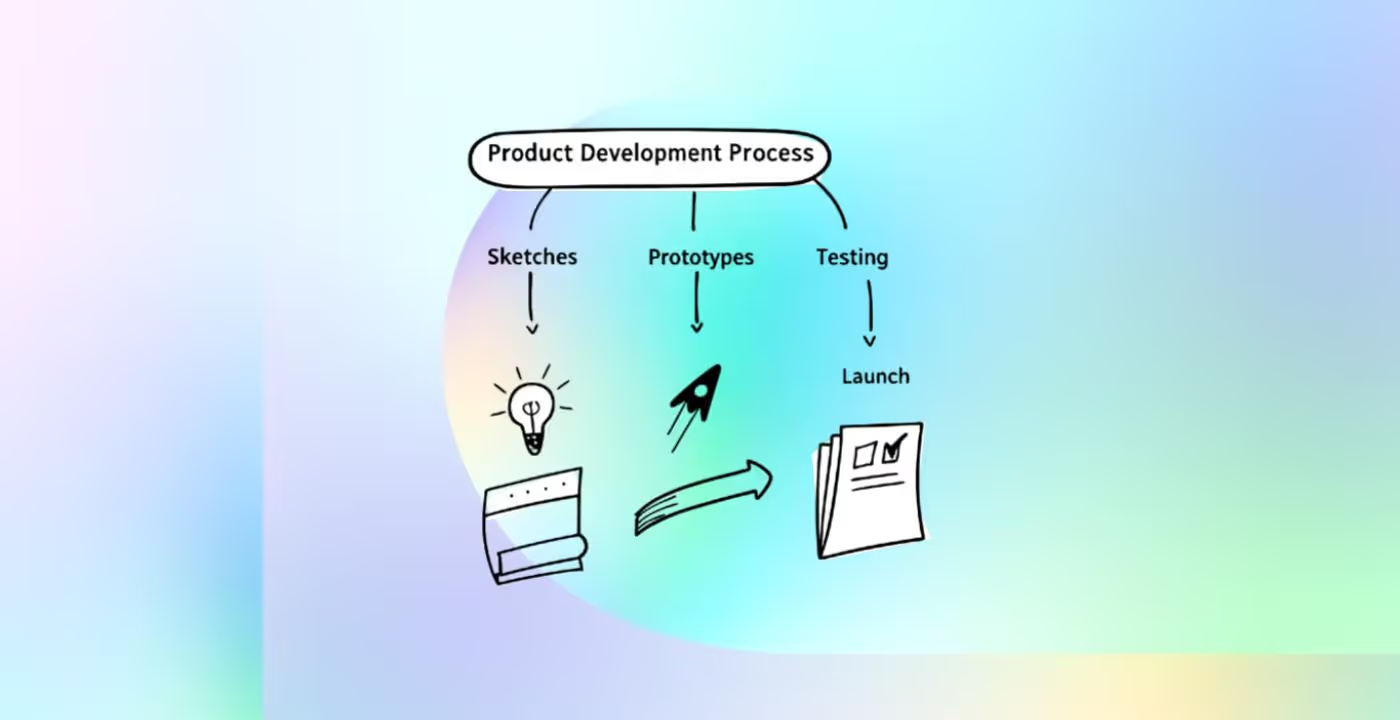
Product Development: How to get the most out of Internal Feedback
We often imagine innovation as a spark of brilliance—a lone inventor sketching breakthroughs in solitude. But here’s the hidden twist: some of the sharpest insights about your product come not from customers, but from the people sitting across the table at your office. Internal feedback is the unpolished gem most teams ignore. What if the very minds you work with every day hold the key to designing something extraordinary? Curious? Let’s dig into the overlooked power of internal feedback.
Releasing a product without solid end-user feedback is ludicrous, and believe it or not, the same goes for internal product feedback.
Still, chances are that you, like many product managers, consider internal product feedback a headache-inducing hassle. You might even be avoiding engaging with your colleagues just to get out of those long-winded and unproductive meetings.
This is a big mistake. However; not only is internal product feedback one of your most valuable sources of actionable product improvements, but it has also been found to boost employee productivity by a whopping 20-25%.
So stick around as we dive into exactly why and how you take your product to the next level using internal product feedback.
Benefits of Internal Product Feedback
Yes, we know. Trying to convince the team to squeeze yet another meeting in their busy schedule isn’t going to get you to the stars.
But it’s worth spending your time. Let’s talk a bit more about why that is.

1) Gets everyone to follow
Internal product feedback will get everyone on the same page, with a shared understanding of the “What - Who - When - How” of your product. This brings clarity and gets everyone on the same page. This shared understanding with your internal stakeholders will present a stronger, unified brand. On top of that, it will strengthen the credibility of your product. Consider this:
A compact group marching in the same direction sends a stronger message than individuals going each their own way and sending conflicting signals.
2) Gives you a holistic view
Internal product feedback will help you not to get stuck on that single feature but adopt a holistic view of your product instead. Your colleagues in the other departments can help you see the product as a whole, rather than as isolated features.
Failing to communicate and gather sufficient feedback can lead to feature silo mentality. This endangers the usability and quality of your end-product.
This connects to the previous point. Getting everyone to share their understanding of the product can foster collaboration and enhance a holistic approach to product development.
3) Helps you source knowledge
Picture this. Your design team is developing a look the salespeople will never be able to sell.
Or, your marketing department is exposing your product’s Achilles heel and not really hitting the spot. Both very likely and unpleasant scenarios.
That’s where internal product feedback comes in. By adopting internal product feedback, you ensure that the features developed are those requested by your end-users. Sure, you might have done your fair share of customer interviews. However, more often than not, customers don’t really know what they want or are unable to communicate it.
The salesforce, on the other hand, is dealing with hundreds of customers on a daily basis. By collecting and comparing customer feedback they are able to connect the dots. In other words, they’re able to present you with a deeper level of understanding customer needs.
4) Enables you to correct mistakes as you go
Don’t wait until launch date to check for issues and make adjustments. That will probably end in you postponing the launch and losing revenues (and make some customers disappointed). Instead, tackle the problems head-on and step up your internal feedback game. This will help improve and support your product through its lifecycle. Process adjustments, along with preparation and analysis, are so important that lack of those is considered “as the most common causes of new product failures”.
It’s high time you give some internal product feedback tools a try. But where to start? Well, luckily, we’ve collected a few methods below.
Implement Internal Product Feedback
Now that we’ve convinced you that internal product feedback is worth it, it’s time to introduce you to 3 different methods. That is, without ending up in a messy and unproductive catastrophe.
1) The one with the good, old-fashioned ways
If you are too submerged by apps, platforms, and never-ending updates, then this internal product feedback method might suit you just perfectly.
Despite most people’s aversion to internal meetings, they’re still a good option for tackling unstructured topics.
These feedback sessions can give brand new feedback or clarify already existing feedback. However, they can prove a bit limiting in today’s digitalized world. Why?
You can give feedback only in set times and therefore end up forgetting ideas. To not waste anyone’s time, you need to be extra careful about how you structure the sessions.

Another oldie but goldie is visuals. Banners and posters in the break room can help catch the attention and fix concepts in people’s mind (and they’ll even stick!).
The main thing with visual communication is that it must both inform and entertain at the same time. On top of that, when a displayed message is connected to positive emotions, it’ll engage your colleagues more, and increase their productivity. So, go ahead: print posters, create artsy banners and go bananas with sticky notes.
The downside of visuals is that their impact is hard to track: you’ll never know when your employees check them or if they even look at them at all. They’re defined by the physical space as well as to a limited number of keywords.

2) The one with the cloud-based spreadsheets
Employing collaborative spreadsheets allows you to invite other teams to pitch in on your projects. No matter if you’re in the same office or working from a beach in Malibu. In other words, it’s a highly flexible method.
Take Google Sheets, for example. It makes it easy to keep track of who’s done what when, while staying on top of those valuable comments. Moreover, cloud-based spreadsheets can be useful for sharing both qualitative and quantitative data. However, collaborative sheets are no good at handling complexity: you’ll be able to insert a limited amount of comments before it gets too crowded in there.

3) The one with the idea management platforms
Get a designated tool for your ideas, to share amongst the different teams. This allows you to ask targeted questions, keep all ideas in a process and keep track of those valuable inputs.
You might be thinking, “Can’t I use Slack or Yammer for that?”. Well, while we ourselves love to use Slack for short messages, the reality is that such tools fall short of working with feedback. Oftentimes, great ideas are lost between animal GIFs and the lunch menu. Meaning time wasted on tedious sorting for you and less feedback for your product.
Instead, Ideanote offers a mobile platform that you and your team can easily access anywhere, at any time. It democratizes the feedback process and allows you to share ideas with the whole office.

Moreover, an idea management platform helps you prioritize what feedback to implement and focus on. This assures a quality process. How? By putting emphasis on that piece of feedback that’s going to take your product to the next level.
No more distractions. No more overreaching complexity. Just valuable, developed ideas, ready to be implemented.

Your new best friend
In this article, we have been your guide in the complicated jungle of internal product feedback. So far, we’ve learned that internal product feedback is worth considering because it;
- Gets everyone to follow & creates a shared understanding;
- Gives you a holistic view of your product;
- Helps you source knowledge from external departments;
- Enables you to correct mistakes and misunderstandings as you go.
Moreover, we went through pros and cons of what we think are good product feedback tools:
- Meetings and visual communication strategies;
- Collaborative online spreadsheets;
- Idea management software.
Internal product feedback is of paramount importance because great ideas are built on other great ideas. Internal product feedback helps idea evolve and turn into even better ones.
We know that internal product feedback is not the holy grail. Seek a balance between external and internal feedback. Match the development of your product with market expectations and customers’ wishes.
Meanwhile, if you feel like you’re sitting on a golden idea but can’t wait for next week’s meeting, why not give us a try? Or maybe you are hungry for more resources on innovation? Head to 59 insanely actionable innovation resources.
Next up to Read:
Unlock Innovation with Ideanote—Start Now




